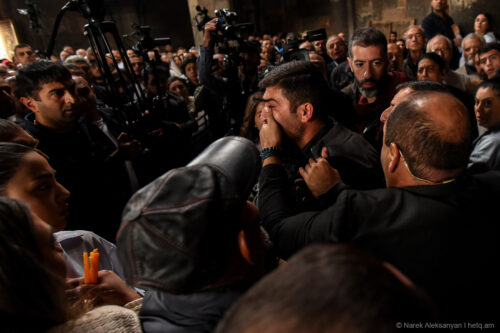
The French mandate (peacekeeping forces) in Cilicia
Genesis Armenia think tank/foundation has published the second part of the article titled “The French Mandate (Peacekeeping Forces) in Cilicia” by Candidate of Political Sciences Abraham Gasparyan and Historian Armen Sargsyan (Part 1). The article is presented below:
Part Two
As the Cilician mandate was long granted to France, let us examine the foundation upon which France relied to exercise its mandate rights during those years.
In the early 20th century, France acted as the “protector” of all Catholics in the East— the Armenians of Cilicia were Catholics—and extended its influence through numerous schools and charitable institutions. France’s policy on the Armenian Cause can be divided into two phases: from 1878—when the Armenian Cause was internationalized under the Treaty of San Stefano—until World War II, and the subsequent phase from World War II to the present day. In the first phase, France’s policy toward Armenians can be characterized as pro-Turkish, reflected in its positions from San Stefano to Lausanne and beyond. During this phase, France’s policy was dictated by the special interests of French monopolists and financiers in economic heights. For example, 62 percent of the Ottoman debt and half of the capital of tobacco enterprises belonged to France. These were the main factors that made France uninterested in the partition of Turkey and therefore in the liberation of Western Armenia. France’s pro-Turkish stance was determined by the expression and supremacy of economic interests.
On March 9, 1914, France signed a treaty with Turkey, granting it concessions for the construction of railways and roads in Western Armenia. Although France and Turkey were on opposing alliances in World War I, France did not engage in war against Turkey during the conflict.
In 1916, with the secret Sykes–Picot Agreement signed between Great Britain and France, Cilicia was placed in France’s sphere of influence, and it was decided to create an Armenian Legion. In November-December 1918, French troops, along with the Armenian Legion, captured Cilicia, and France became a country representing peacekeeping forces, remaining there until 1922. Encouraged particularly by the presence of the Armenian Legion, around 150,000 Armenians returned to their homeland. If it weren’t for the Armenians, the presence of French troops in Cilicia would have been meaningless (as was the case with the Russians in Artsakh recently). However, unfortunately, France’s material interests proved more decisive than its peacekeeping mission.
In December 1919, negotiations between France and Mustafa Kemal Atatürk resulted in a draft agreement stipulating that France would return Cilicia to Turkey (in contrast to England, Italy, and Greece). This also meant that France recognized Kemal’s government. France’s subsequent actions were detrimental to the Armenians of Cilicia, particularly during the San Remo Conference in 1920, and later in Sèvres and thereafter.
The Treaty of Sèvres, signed on Aug. 10, 1920, did not include Cilicia within the Armenian state’s borders, but it was understood in the U.S. Congress that Cilicia should have an autonomous government under French protection. It should also be noted that under Article 88, Turkey acknowledged the independence of Armenia.
The Turkish-French agreement signed on Oct. 20, 1921, in Ankara had disastrous consequences for the Armenians of Cilicia, as it stipulated the withdrawal of French troops from Cilicia by Jan. 4, 1922, excluding the Sanjak of Alexandretta.
What did France gain in return? Turkey granted France concessions on several sections of the Baghdad railway. Later, these concessions were to extend to Turkey’s mines, railways, ports, and rivers. In this regard, French historian J. Pichon noted, “All promises made to the Armenians were forgotten.”
Following the Treaty of Sèvres, it was France that demanded a revision of the treaty, viewing it as “highly contrary to French interests.” This ultimately led to the convening of the Lausanne Conference, where there was no mention of Armenia. In fact, Armenian demands to either unite Cilicia with Armenia or grant Cilicia autonomy under French protection were rejected. The British project to establish an Armenian national home in Cilicia and unify the Armenian diaspora also failed. Cilicia faced the threat of Armenian depopulation. Ultimately, the French ceded most of Cilicia to the Turks under the 1922 treaties of Ankara and Lausanne. Taking advantage of France’s position, in June 1939, Turkey annexed the Sanjak of Alexandretta (Hatay Province), which was part of Syria. France showed no resistance.
Between 1922 and 1939, more than 160,000 Armenians emigrated, particularly to Syria, Lebanon, and other Arab countries.
In summary, while the French were carrying out a peacekeeping mission, the safety of Armenians in Cilicia was ensured. However, France’s material interests proved more decisive than the peacekeeping mission, leading to disastrous consequences and the depopulation of Cilicia.
It is also noteworthy that since World War II, France has been a keen defender of Armenian rights and, in some respects, a strategic ally.
To be continued


